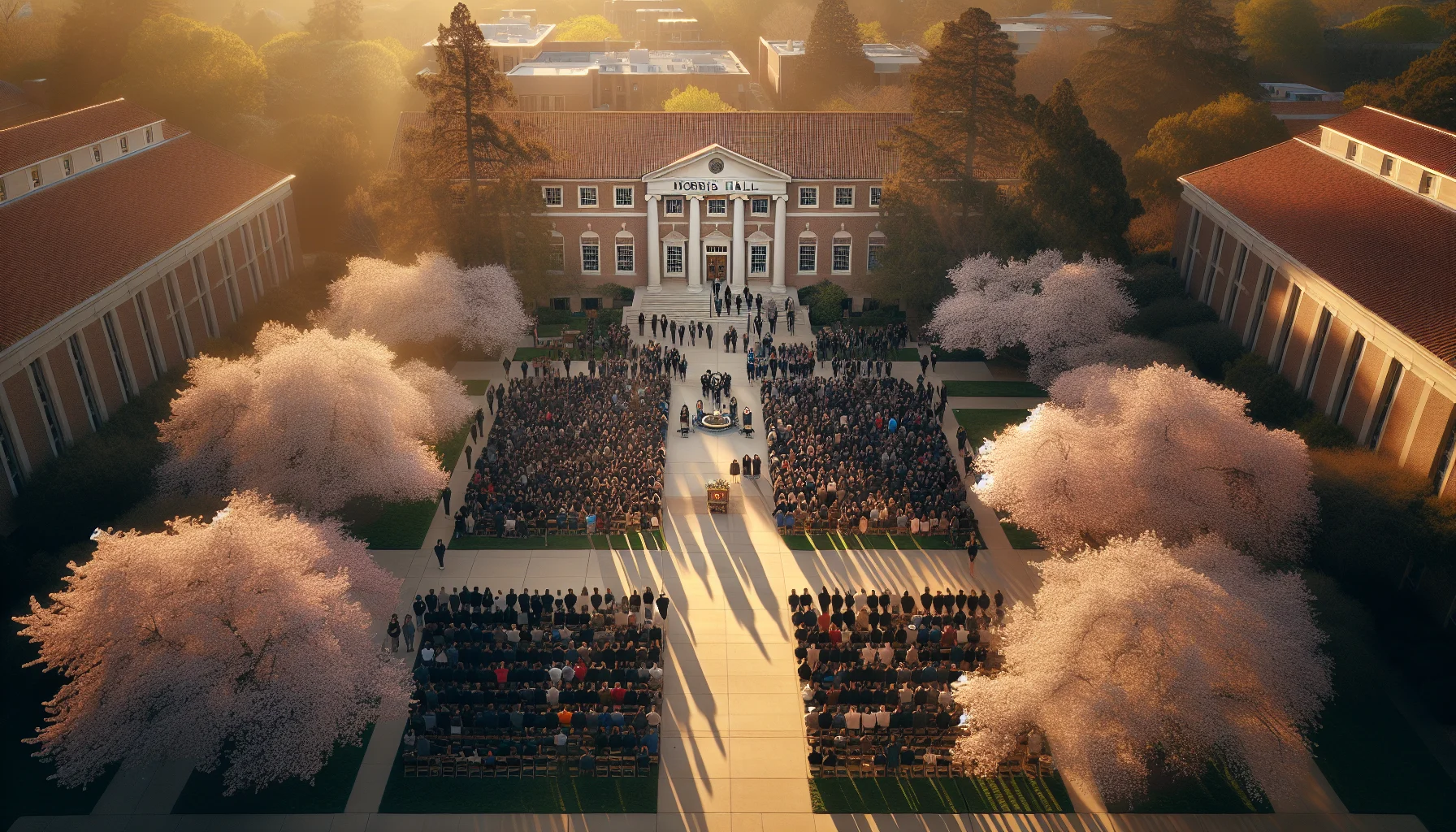
The Virginia Tech Shooting
by: The Calamity Calendar Team
April 16, 2007
A Quiet Morning Broken
The dawn of April 16, 2007, was like any other on Virginia Tech’s sprawling campus in Blacksburg, Virginia. Students shuffled to early classes, some still bleary-eyed from nightlong study sessions. Yet, within a few short hours, this tranquil setting would be shattered — becoming the backdrop for a tragedy that would forever alter the landscape of American education and gun control debates.
At 7:15 a.m., amid the ordinary hum of morning routines, Seung-Hui Cho, a student with a history of mental health struggles, opened fire inside West Ambler Johnston Hall. The lives of two students, Ryan Clark, a resident assistant, and freshman Emily Hilscher, were tragically cut short. This initial blast of violence would seem isolated, a tragic incident but not yet a harbinger of the greater horror to unfold.
Forewarning Signs
The events of that April morning echoed a grim story that had been building over years. Cho's struggles with mental health were no secret. Diagnosed with anxiety and depression, his experiences were marked by troubling behavior — stark, dark writings in his English courses, and incidents of stalking female students. These signs, acknowledged yet not effectively acted upon due to systemic lapses between mental health services and firearm purchase checks, culminated in lethal consequences.
Despite being declared mentally ill by a Virginia special justice in 2005 and ordered to undergo outpatient therapy, Cho managed to procure firearms legally. The gaps within the system, the silent ravines that allowed an individual grappling with darkness to arm himself, would be laid bare post-tragedy.
The Day Unravels
As the morning progressed, campus authorities hesitated to connect the dormitory shootings to further threats. Meanwhile, Cho transitioned to carrying out a meticulously planned assault. Between these two episodes of violence, he paused to mail a disturbing package to NBC News, a chilling manifesto of his grievances and intentions.
Around 9:40 a.m., Cho entered Norris Hall, another academic building on campus. Locking access doors with heavy chains to thwart any escape, he embarked on a shooting spree across four classrooms. Panic erupted as he moved methodically, shooting indiscriminately — the sound of gunfire mingling with the chaos of screams and hurried footsteps.
Thanks for subscribing!
Chaos and Courage
By 9:51 a.m., desperate calls flooded into the local authorities. Police rushed to the scene, navigating the tumultuous environment, and began to secure the building floor by floor. The attack ceased at 9:55 a.m. as Cho turned the gun on himself, ending his life as law enforcement prepared to intervene.
Thirty-two individuals were murdered, their names forever etched into the annals of heartbreaking loss, while seventeen others bore physical scars as survivors. Six others, in their attempt to flee, suffered injuries — their daring jumps from classroom windows a testament to human survival instincts.
Picking Up the Pieces
The aftermath of the Virginia Tech shooting left the university and the nation grappling for answers. An unprecedented catastrophe, it spurred intense scrutiny and led to significant policy revisions. The state of Virginia promptly reevaluated mental health reporting procedures and launched reforms in firearm purchase legislation, aiming to bridge the chasms that had allowed Cho to slip through.
Virginia Tech itself became an epicenter for safety reform, implementing stringent communication protocols and emergency response strategies designed to prevent future tragedies. The burden of ensuring student safety now shared with a nation awakened to the potential perils lurking beneath the façade of campus life.
A Legacy of Lessons
In the years following the tragedy, the Virginia Tech shooting has remained a pivotal focal point for dialogue on gun control and mental health awareness. The incident underscored the urgent need for integrated systems capable of identifying and assisting individuals like Cho before violence could manifest.
As time edges forward, the sense of loss does not pass unnoticed. Each April 16, the Virginia Tech community commemorates those lost, gathering in ceremonies that blend sorrow with solidarity. The Hokie Spirit Memorial on campus stands as a poignant tribute, a circle of 32 stones representing each victim — a testament to resilience, remembrance, and the collective pledge to foster a safer academic environment.
These annual remembrances echo wider discussions, serving as reminders to policymakers and citizens alike of the importance of vigilant systems, supportive community frameworks, and the responsibility to acknowledge and address mental health concerns without stigma or bureaucratic hindrance.
The Virginia Tech shooting, with its heavy toll, continues to resonate, stirring necessary dialogues and serving as a somber marker — a day when the sun rose over Southern Virginia, only to set in the shadow of profound tragedy.
Stay in the Loop!
Become a Calamity Insider and get exclusive Calamity Calendar updates delivered straight to your inbox.
Thanks! You're now subscribed.